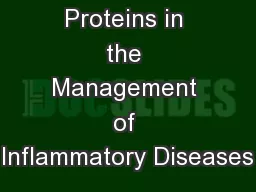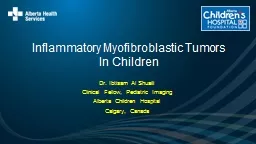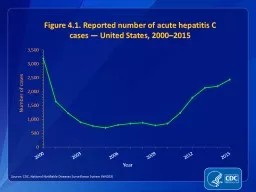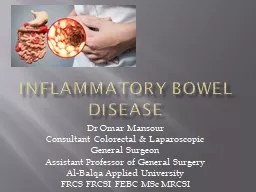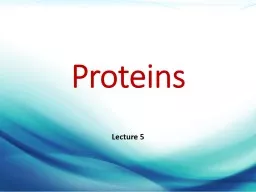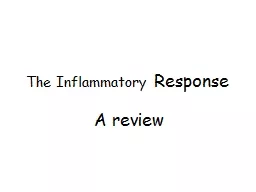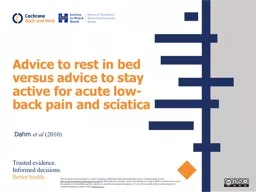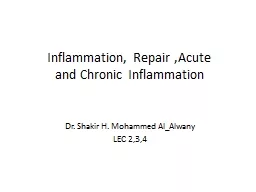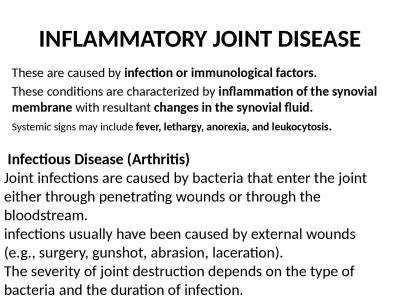PPT-Acute Phase Proteins in the Management of Inflammatory Diseases
Author : myesha-ticknor | Published Date : 2018-11-17
Frank H Wians Jr PhD MTASCP MASCP DABCC FACB Professor of Pathology Texas Tech University of the Health Sciences Center El Paso and the Paul L Foster School of Medicine
Presentation Embed Code
Download Presentation
Download Presentation The PPT/PDF document "Acute Phase Proteins in the Management o..." is the property of its rightful owner. Permission is granted to download and print the materials on this website for personal, non-commercial use only, and to display it on your personal computer provided you do not modify the materials and that you retain all copyright notices contained in the materials. By downloading content from our website, you accept the terms of this agreement.
Acute Phase Proteins in the Management of Inflammatory Diseases: Transcript
Download Rules Of Document
"Acute Phase Proteins in the Management of Inflammatory Diseases"The content belongs to its owner. You may download and print it for personal use, without modification, and keep all copyright notices. By downloading, you agree to these terms.
Related Documents

